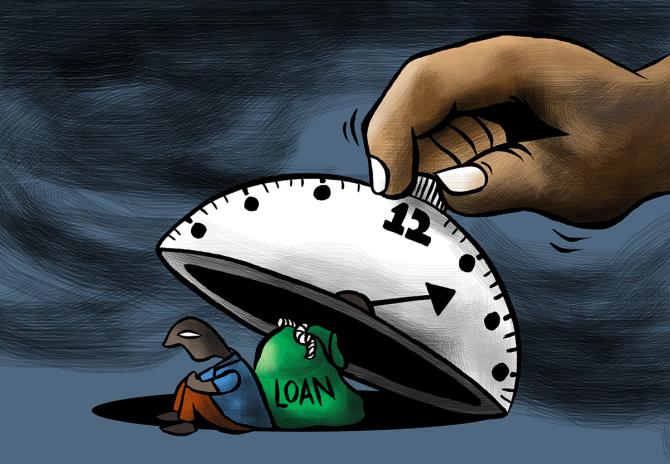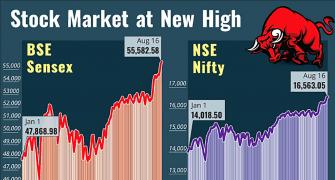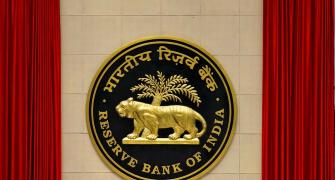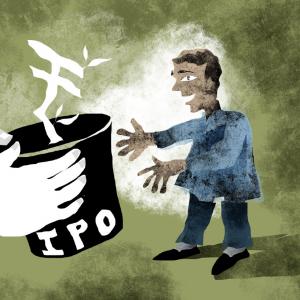Of the 86.4-million transactions initiated in July, 33.23 per cent, or 28.7 million transactions, failed, while 57.7 million were successful.

In an indication of easing financial stress among borrowers, the number of unsuccessful auto-debit requests through the National Automated Clearing House (NACH) platform declined in July, reversing a three-month trend that started with the second wave of the Covid-19 pandemic.
According to the NACH data, of the 86.4-million transactions initiated in July, 33.23 per cent, or 28.7 million transactions, failed, while 57.7 million were successful.
Compared to June, this is a significant improvement in bounce rates.
In June, of a total of 87.8-million transactions initiated, over 36.5 per cent, or 32 million initiated, failed. In May, 35.91 per cent, or 30.8 million transactions, failed.
In April, of the 85.4-million auto-debit transactions initiated, 56.3 million were successful, while 29.08 million failed, which makes up for 34.05 per cent of the total transactions.
“Bounce rates - both in value and volume terms - are down in July, and the recovery has been good.
"This time, the lockdowns were not as restrictive as they were during the first wave.
"The economic impact was lesser. This downward turn in bounce rates should sustain.
"We have not reached pre-Covid levels of bounce rates so far. There is still some stress in the system,” said Anil Gupta, vice-president, ICRA.
The unsuccessful auto-debit requests through the NACH platform are generally referred to as bounce rates.
NACH, a bulk payment system operated by the National Payments Corporation of India, facilitates one-to-many credit transfers, such as payment of dividend, interest, salary, pension, as also collection of payments towards electricity, gas, telephone, water, and periodic instalments towards loans, investments in mutual funds, and insurance premium.
These are applicable for inter-bank mandates or between a bank and a non-banking financial company (NBFC) or a financial technology (fintech) lender.'
In March, before the second wave reared its ugly head, auto-debit payment bounces - as a percentage of total transactions initiated - touched a low since the start of the pandemic.
Only 32.7 per cent of all auto-debit payment transactions initiated failed.
Since December, the share of unsuccessful auto-debit requests - as a percentage - had been declining steadily and was below 40 per cent, indicating higher regularity in equated monthly instalments, utility and insurance premium payments by consumers.
After touching a low of 32.7 per cent in March, auto-debit payment bounces started rising from April onwards due to the second wave and remained elevated in May and June, but came down in July, as the impact of the second wave started receding gradually.
The decline in auto-debit transactions had peaked in June last year, when the failure rate was over 45 per cent.
Despite the bounce rate gradually declining from the peak seen during the initial months of the pandemic, it has remained higher than the pre-Covid levels.
In January and February 2020, the bounce rate was around 31 per cent. In 2020-21, the unsuccessful auto-debit requests constituted 38.91 per cent of total requests.
In 2019-20, it was 30.3 per cent; in 2018-19, it was 23.3 per cent.
There are many reasons why such requests get declined.
The most common being customers not having adequate balance in their accounts.
A high bounce rate seen last year coincided with the peak months of the pandemic, which ravaged the economy, rendering millions jobless.
Also, there was a moratorium on loan repayments for six months, which ended on August 31, 2020.
This time, although there was no blanket moratorium on repayments, borrowers had the option of going for restructuring.
Experts had earlier pointed out that the bounce rates would go down over the course of time as the economy recovers.
According to experts, auto-debit transactions through NACH constitute less than 15 per cent of collections for banks.
Hence, a higher bounce rate need not necessarily indicate a higher degree of stress in the retail asset portfolio of banks.
On the contrary, a higher bounce rate could indicate stress in the NBFC portfolio.
Experts have said NBFCs and fintech lenders, in the past few years, have stepped up their retail loan disbursements.
Moreover, the customer profile of NBFCs is typically weaker than bank customers.
Even before the pandemic struck, bounce rates were going up.
NBFCs and fintech lenders have seen huge growth, with digital lending coming in.
These segments attract a newer and different set of customers, who might be averse to taking risks.
Nonetheless, it would not be right to say NACH failures have gone up simply because of these players getting into retail portfolio; banks, too, are seeing higher bounce rates.










